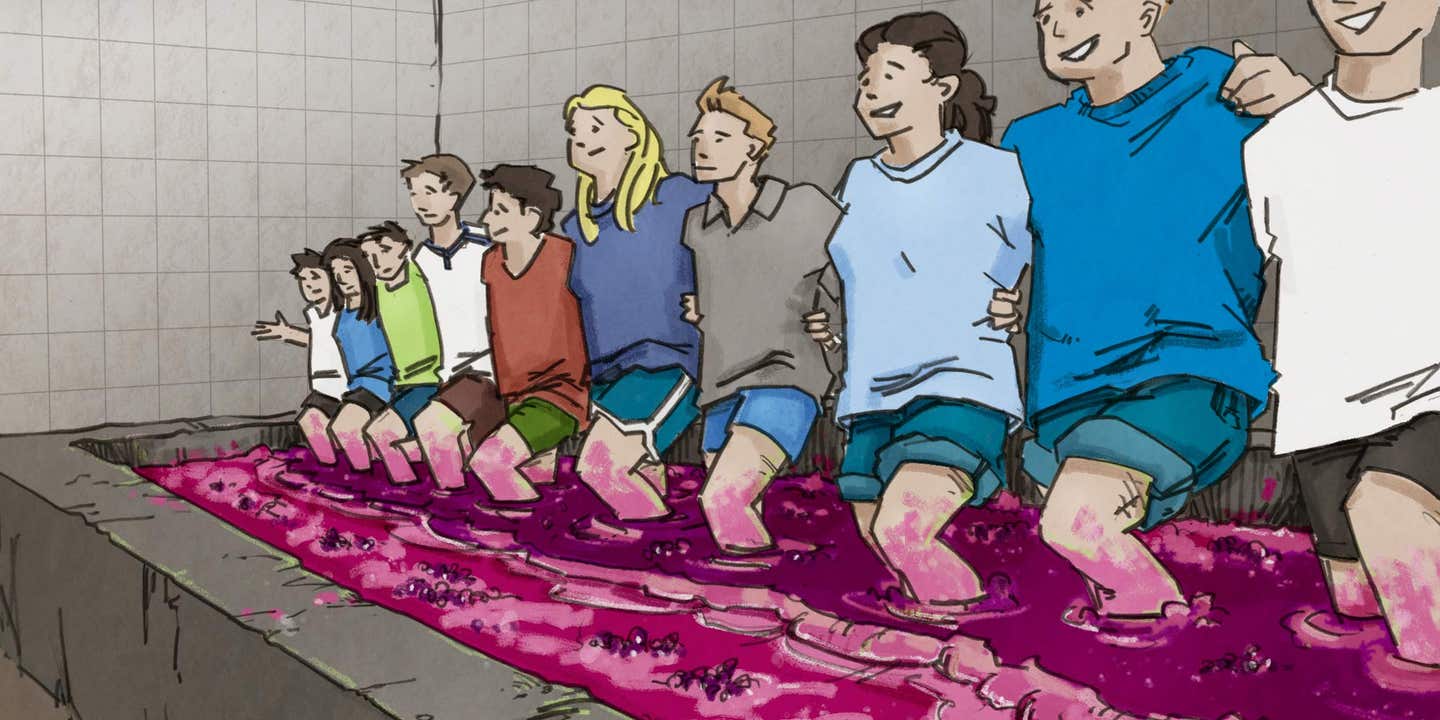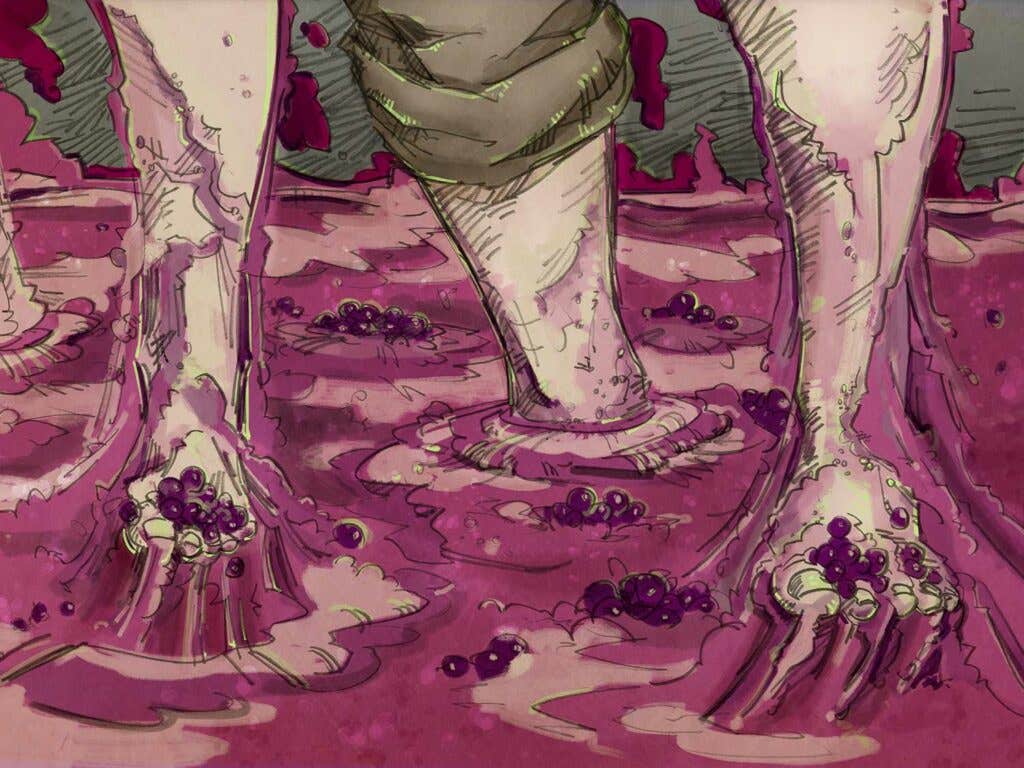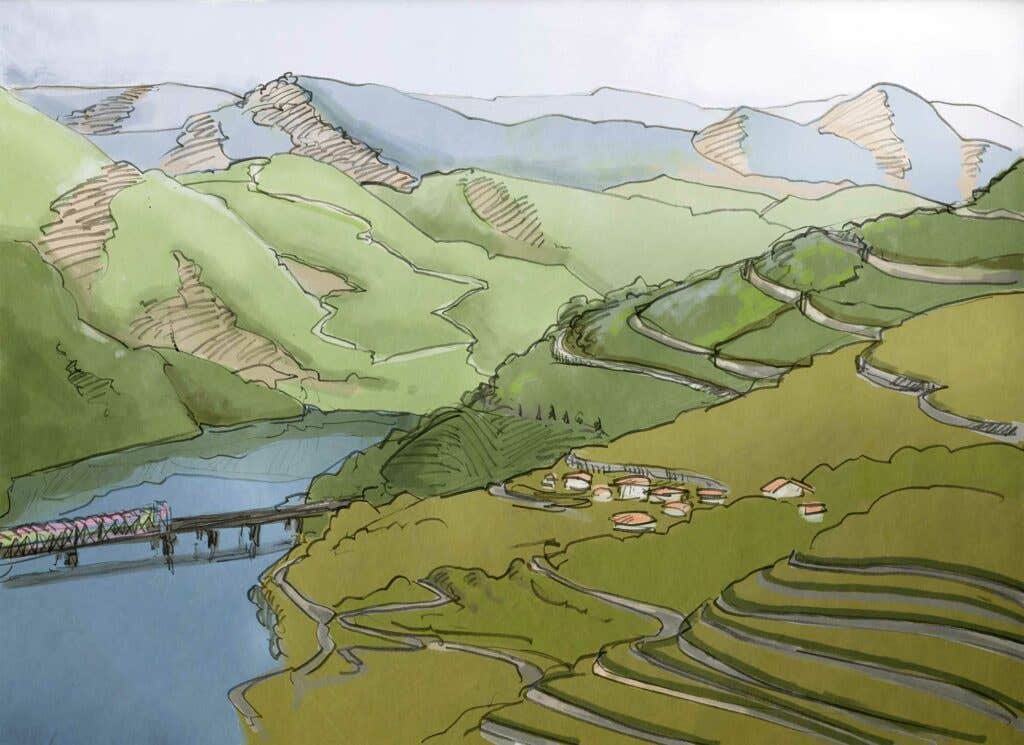
Why the Port World Still Believes in Making Something With Your Own Two Feet
Carey Jones on the joy of stomping grapes underfoot for future generations of port drinkers
Thirty, forty, fifty years from now, if a connoisseur uncorks a bottle of 2017 Taylor-Fladgate port, they would be forgiven for not guessing that the grapes to make it were crushed underfoot. By a team of Portuguese vineyard-workers and one extremely enthusiastic American amateur (yours truly). To the tune of the Electric Slide.
The storied port house Taylor's, sold in the States under the name Taylor Fladgate, still presses its grapes in the most old-fashioned manner: By foot. (As do the two other houses under the same ownership, Croft and Fonseca.) After spending harvest days picking clusters of Touriga Francesa and Tinta Barroca in the hot Douro Valley sun, workers spend their nights diligently treading the fruit into juice—thigh-deep in stone granite tanks known as lagars.
For the first half of each night’s four-hour shift, the process is deliberate, almost military, a precise march done in lockstep—left, right, left, right. It’s physical work, and monotonous at that. But in joyous concession to human nature, the last two hours evolve into an outright dance party. There might be an accordion player, or just a boom box.

Or, as when I wandered into the crushing room at the estate of Vargellas on a warm September night, a synthesizer—the odd, charmingly dated soundtrack for the twenty-odd young workers dancing and singing with abandon as they tromped through gallons and gallons of grapes. The energy was, well, Bacchanalian. (I'd had my share of port that evening; I saw no indication that the others had done the same, though the organic high of grape-stomping works its own magic.) It took only a moment, and a leg-bath in clean alcohol, before I was in there with them.
Stepping into a thigh-high tub of partially crushed grapes, suspended in their own juice, is a curious sensation. Like a mud bath, but less thick, less squelchy. There's weight; there's resistance. Frankly, it's difficult. A few experimental stomps up and down, and I understood the exertion. I'm no stranger to a dance floor, but a dance grape-tub was something else altogether. A few minutes of cavorting left me winded. I was wholly unprepared for a five-minute rendition of the Chicken Dance. (The Portuguese Chicken Dance is identical to the American; the Electric Slide has a few extra steps; both are slippery affairs in a granite pool of half-crushed grape. Singing is encouraged.)
Plenty of workers at the port estates are older, more weathered, having been in this line of work for years. But that night in Vargellas found a younger, peppier bunch. Some pickers-and-crushers were in graduate school, or between early jobs. One of my impromptu dance partners had a few spare weeks before returning for the last year of his engineering degree. He grew up down the river in Porto, where the historical port houses reside. He’d been drinking port for much of his young life; why not be a part of its production?
Foot treading is “primitive, but effective,’ says David Guimaraens, head winemaker for Taylor Fladgate, Fonseca and Croft. Port wines have a more pronounced sweetness than standard table wines. Most mechanized crushers would split the grape pips, or seeds, which contain bitter elements considered undesirable in port. But no matter how hard a human stomps on a grape, her foot is simply incapable of breaking open a pip.
What's more, the slow, deliberative process of treading that allows an extended period to extract flavors and color prior to fermentation. In the course of winemaking, fermentation turns sugars into alcohol; since port wine intentionally preserves higher residual sugar, its fermentation period is shorter. "That leaves less time to extract the colors and tannins," according to Guimaraens. "The prolonged, sometimes lively action of foot-treading is a very effective extraction."
Many port estates abandoned the practice in the 1970s, with widespread social and technological changes that resulted in attempts to mechanize viticulture. Foot-treading is comparatively imprecise; according to Guimaraens, the winemaker has little control. Yet he still stands by the practice.

Unlike many other wines or even spirits, vintage port is made for the future—forty, sixty years in the future. The most promising vintages are aged in-bottle for decades; port obsessives might uncork a 1963 and a 1977 in a single night. (In a rather remarkable review, wine writer John Gilman noted a suggestion for the 1963 Taylor Fladgate Vintage: "Drink between 2020-2075.")
Thus is a way, the world of port is inherently conservative. Changing any aspect of the process effects a change in the wine. And unlike, say, a Vinho Verde from not far away, you won’t taste the difference when you open a bottle of young wine the next year. It’ll be far longer than that. Says export manager Chris Forbes, “The decisions we make now will be with us for decades. As long as we can still hire people to do this work, we will.”
Back in the tank, quite honestly, I’m not thinking about how posterity will regard the 2017 vintage. I’m far more concerned with the limbo dance playing out before me. I know my own limbo limits on dry land, but not in a grape tank. Will the weight of semisolid grapes somehow support my own? Where exactly is my center of gravity, when I’m partially suspended in fruit? Would I discover heretofore unknown limbo skills or be sucked down into a crimson abyss?
I survived, and emerged from the tank streaked with purple, smelling of grape must, equal parts exhausted and exhilarated. I should open up a grape-stomping gym, I found myself musing. Don't hire workers and pay for labor; make the wine-loving millennials pay you for the privilege of crushing grapes. I'm thinking San Francisco.
During harvest, generally for several weeks starting in mid-September, visitors to Croft’s Quinta da Roêda estate can try foot-treading grapes in a lagar tank for themselves, with advance booking. No guarantees on music or the Chicken Dance, though.
Keep Reading
Continue to Next Story










